 Read the peer reviews for this feature.
Read the peer reviews for this feature.
Download the graphs for this feature.
There has never been a more exciting time to be a supplier in the UK rail industry. Investment has been much needed for some time, but now the scale of it is unprecedented. Across infrastructure, signalling, rolling stock and stations, the enthusiasm in the sector is tangible. We are embracing the opportunities that are being created.
Beyond the UK’s classic rail network, HS2 steams ahead as well. Full Parliamentary approval for building the line is almost upon us. And HS2, more than any other project, will be truly transformational for our industry.
Finally, as a sector, we know that there is a significant pipeline of investment for which we can plan. This critical long-term certainty will enable us to plan and organise better. We can improve what we offer the rail network, and on top of that how our businesses will benefit the country through the investments we make to deliver it.
But all this needs to work both ways. Beyond being shown long-term plans, it is also vital that suppliers get more involved in the planning themselves. That will allow capability and capacity to be factored in properly.
We need each other. The UK rail supply sector has spent too long behaving tactically, leaping from one opportunity to the next without developing a long-term strategy. We need to change that to become sustainable and to grow.
With the publication of the Rail Supply Group (RSG) strategy, everything changes. If it is successful (and I believe that it will be), the industry can take advantage of the investment in our domestic market and exploit it to compete effectively in the vibrant global rail market.
We are not starting from scratch. The Rail Delivery Group’s Rolling Stock Strategy, first published in 2013, started us on this path - giving suppliers greater understanding of the orders coming in the medium term. The Government’s National Infrastructure Plan has also been important, and starts to explain a wider view of Government investment. These long-term projections are already helping British manufacturers to plan for the future of their businesses. Now the RSG strategy completes this jigsaw.
Let me be clear - we have never been here before. The RSG rail sector strategy is the first clear statement of the aims of the industry, as we seek to build sustainable growth and develop our export strength. It is simultaneously full of new ideas while being grounded in years of experience in this country and internationally. And having been developed by the entire industry for all rail manufacturers and suppliers, it will have a unique part to play.
Rail may be a relatively late addition to the Government’s industrial strategy programme, but with this new strategy nobody could argue that the UK rail supply sector has failed to deliver a comprehensive plan. We are confident that it will provide the framework to transform the rail supply chain over the next ten to 15 years and beyond.
The RSG Council represents a diverse range of stakeholders including international companies, small and medium-sized enterprises (SMEs) and clients, working in partnership with Government.
Just as the RSG strategy is designed to fit with the wider landscape of long-term planning, so the RSG contributes to the group of rail leadership bodies that will drive the modernisation of the railway. The RSG works closely with the Rail Delivery Group, the Association of Train Operating Companies, Network Rail and the Rail Freight Group to establish a shared vision for the future UK railway. And all of these groups have contributed to the development of the strategy.
The RSG strategy aims to make the most of the record rail investment. The Government has committed £38 billion for the delivery of Network Rail’s infrastructure investment programme in Control Period 5. The full level of investment in rail infrastructure across all of the RSG’s areas of activity (including London Underground and Light Rail systems across the UK) is nearly £87bn, according to the Government’s national infrastructure plan. Add to this the value of rolling stock contracts across the UK, and it is clear that we are in an unprecedented period of investment in the UK railway.
This reflects the new confidence in the potential of rail to deliver key benefits for the UK economy. And RSG considers it the role of the rail supply chain to structure itself so that it is best placed to capitalise on this investment.
This is about more than securing effective delivery of the exciting projects in the infrastructure pipeline to deliver growth, jobs and increased productivity for the UK economy. It is also about positioning the UK rail supply chain to use these opportunities to develop its capabilities to export and grow - whether by exporting new capabilities to develop and manufacture high-speed rail, by enhancing the capacity of our rail sub-systems, or by growing the capacity of our SMEs so that they are able to make an impact on the global market. The potential prize is huge for the UK… a much greater share of the £128bn international market.
We are well placed to take advantage of these opportunities. We directly employ over 124,000 people, with an estimated turnover of £7bn and generating £3.8bn of value to the UK economy. This is a significant contribution, and we should make far more of our role and status in this wider context. The range of businesses in the supply chain, from SMEs to established trans-national companies, gives us huge potential for collaboration and growth.
We need to focus on this wider context and our role in the UK economy. Our sector is of sufficient scale that it can make a real impact on the UK’s economic performance. The RSG strategy is our method for doing that, and to set out the path for delivering the growth, jobs and productivity that the Government seeks from us.
The importance of productivity growth cannot be understated. The UK is trailing other G7 economies in labour productivity by 18%. Manufacturing is an area of the economy where this trend can be reversed - through careful investment in innovation and developing our high-skilled workforce, rail can play an important part in unlocking the productive potential of the UK economy.
But a high-performing rail supply chain will also provide productivity benefits beyond the rail sector. We know that rail enhances the productive potential of the economy by up to £11.3bn per year, and that up to £1.7bn of benefits are derived from sharing knowledge and technology in the clusters that rail links facilitate.
The RSG therefore starts by issuing a bold commitment to industry and the UK - a productivity pledge to deliver:
- A strategic approach to procurement and planning.
- A clear plan to drive world-class UK technologies.
- A coherent skills plan to attract the best talent and increase productivity.
- A comprehensive package of support for SMEs.
- A fresh, co-ordinated approach to increase exports and inward investment.
To get there, the RSG has focused on four strategic pillars to drive growth. Through concerted action in each of these areas, the supply chain can prepare itself for sustainable success at home and abroad:
- Creating market conditions for growth.
- Accelerating the uptake of innovation.
- Investing in people and skills.
- Growing exports and inward investment.
In each of these areas the RSG’s strategy sets out achievable proposals to support the supply chain.
Market conditions for growth
The first requirement for growth is a confident supplier base to encourage investment. After listening to industry, the RSG established that one of the most pressing problems for UK rail suppliers is the volatility of demand in the sector, making it difficult for businesses to develop long-term UK strategies and presenting obstacles to SMEs looking to develop further. While every market experiences fluctuating demand, the experience in the rail supply sector can be extreme - in 2011, the industry estimated that discontinuity in production added 20% to the cost of rolling stock.
To establish the conditions that rail businesses need to grow, the RSG will work closely with government to produce greater visibility of planned investments. This new mechanism will support suppliers to prepare effectively for peaks and troughs in demand, letting them make sound investment decisions on people, innovation and equipment.
We know as well that in rail supply (as in many areas of manufacturing), access to finance is a significant problem for development, particularly for small companies looking to expand. This is severely felt in industries with complex structures and rapid innovation, where financiers can struggle to appreciate investment opportunities when they arise. The RSG is therefore seeking to develop a finance forum for rail suppliers - this will build on the success of forums in the aerospace and automotive sectors to improve banks’ understanding of the industry and its potential.
Suitable conditions within the supply chain are just as important as these external pressures. The RSG has looked to other sectors where supplier excellence schemes have provided effective benchmarking to spur performance of all players in the industry, and developed a plan to promote best practice and continuous improvement. The RSG will also look to current experience in the sector to agree a whole-industry code of practice for collaboration.
By taking action to foster collaborative working in the supply chain, and by seizing opportunities to work closely with government as it develops its plans for rail (not least with the National Infrastructure Commission and the Small Business Commissioner), the RSG will give the supply chain an effective voice in shaping the future of the railway for its passengers and suppliers.
Innovation
Businesses operating in this new environment can have the confidence to invest in research and development, and the RSG will take a strong leadership position within the industry to ensure that investment in innovation is available to the supply chain.
In areas of technology and innovation British rail suppliers have key strengths that are unmatched in the world market. The RSG has identified five key areas of technology where UK businesses already have a leading position, or where they have the potential to become world class in the next ten to 15 years.
- Energy management.
- Customer experience.
- Advanced control.
- Whole-life asset optimisation and through-life management.
- High-value rolling stock systems.
From developments in flywheel applications and energy systems analysis, to the innovative design of new mobile payment, data management systems and cyber security advances on the network, British suppliers have broken new ground in offering creative solutions to rail challenges. Meanwhile, advances in asset management systems have resulted in UK business leading the way in the use of Building Information Modelling and remote condition monitoring, which will transform the design of tomorrow’s global railway.
The RSG’s plans to prioritise innovation in these areas will begin with the development of a network of rail centres of excellence. Bringing together the best of the UK’s rail universities with businesses in the sector, the new centres will pass the benefits of collaboration in applied research to the whole supply chain. For example, Aerospace innovation facilities have already led to significant collaboration on projects between tier 1 manufacturers.
This opportunity for shared research across early and late Technology Readiness Levels will be a boon to innovation in UK rail. Such centres can support a faster development cycle, allowing products and services to enter the market more quickly. A quick route to market is essential for all actors in the supply chain, but particularly for small businesses, for whom access to capital and restricted cashflow can intensify the need for first mover status.
But innovation is not limited to technology and research. Innovation in business structures and franchising will be crucial in preparing the supply chain for the future. By co-ordinating a programme of activity with the RDG, the RSG will ensure that the people who build the railway have a strong voice in shaping it for the future, including encouraging innovation in franchising arrangements, such as the Residual Value Mechanism piloted by the DfT.
The strategy also commits the RSG to leading the development of a code of practice for embedding innovation in the railway, as well as a framework for collaboration. Just as important is a commitment to champion work to streamline product approval processes, to reduce time and costs while maintaining safety standards and transparency.
People and skills
New innovation requires a highly skilled workforce to develop and implement these emergent solutions, and the RSG’s strategy provides for the increase in recruitment that the industry needs.
Many of the challenges facing UK rail manufacturers are felt across engineering, manufacturing and construction sectors. A lack of diversity in an ageing workforce is exacerbating the problems of a widening skills gap - it is clear that much more must be done to attract new talent.
The RSG will work with government and the National Skills Academy for Rail to increase promotional activity in schools and colleges, to ensure young people have access to information and to ambassadors for rail careers.
The industry has been set an ambitious target by Terry Morgan, in his Transport Infrastructure Skills Plan, to increase the number of apprentices in rail. By providing a strong single voice for the rail supply chain, the RSG will work to achieve this growth in apprenticeships through the production of a detailed skills plan, including raising the profile of the industry to attract and retain a diverse and high-performing workforce.
However, it is also important to deliver effective training to upskill experienced staff and equip them for today’s rapidly changing railway. Measures such as the RSG’s proposed Assessment and Assurance Panel and its Skills Intelligence Unit will monitor the quality of the sector’s training offering and its skills gap respectively. The RSG will also support the development of a network of training facilities, to increase the availability and visibility of the highest-quality training capacity across the UK.
The RSG recognises the importance of targeted action to increase genuine demand for training. A new procurement approach that requires 5% of a bidder’s staff to be in training at pre-qualification will drive upskilling in the sector, while a new talent pool for recent apprentices will provide a ready supply of high-calibre talent for all businesses in the industry (including growing SMEs) to draw on. By delivering these changes for new and existing workers the rail sector can transform its productivity in support of a globally competitive industry.
Exports
All of these achievements will provide a stable base upon which to increase the exporting capability of the UK’s rail suppliers. By developing the UK’s strong home market and working closely with its world-class universities, the rail sector can strengthen its solid platform for exports to take advantage of the 2.7% annual growth in the global rail market.
Some areas of UK rail need urgent support to make the most of these opportunities. Many SMEs with world-class technology do not have the resources to compete internationally. Some of the measures planned to support UK rail SMEs have been outlined above, such as the finance forum to allow greater access to capital. It is also important that the supply chain continues its history of collaboration, with large players helping to develop the capabilities of new businesses.
It is also clear that international standards should not be developed without the input of UK industry. UK manufacturers will benefit greatly from consistent standards at home and abroad, so that products made for the UK railway can be sold into the largest possible overseas markets.
The experience of European Technical Specifications for Interoperability has shown that standards can make exporting common technologies and skills significantly easier, while ISO and IEC perform effectively at the global level. So RSG will work with the British Standards Institution and Government to further support our UK representatives in their work with standards committees.
We know that we have strong institutions to support UK exports in UK Trade & Investment and our own industry associations. The RSG strategy sets out the group’s plan to continue its close work with government to promote UK rail across the globe. By stimulating and promoting the whole supply chain we can unlock exports and inward investment on an unprecedented scale.
SMEs engaged with UK rail innovation will continue to form a key part of the RSG council and a focus for its work. Two initiatives have already been launched by the RSG and its partners: the Rail Mentoring scheme (run by RSG member association the Rail Alliance), and Open Doors (an RSG scheme run by its SME members).
Rail Mentoring matches rail SMEs with mentors drawn from large businesses across the rail supply chain, for a range of support. Prior to partnering with an organisation, the Rail Alliance works with SMEs to develop the skills of SMEs with experience in the rail industry and of those trying to bring their innovative products to the supply chain for the first time.
Once partnered with one or more large suppliers, SMEs have access to industry-leading expertise to advance their products and access new markets.
Open Doors, meanwhile, was developed to help SMEs fast-track their innovative products directly to Tier 1 suppliers, original equipment manufacturers and train operating companies. By providing a single senior contact within large companies, the scheme ensures rapid evaluation of SME products, with appropriate feedback.
We want this strategy to reflect the reality that our sector faces, and it absolutely must be deliverable. We will keep it under review, and we will report on our progress regularly and transparently. This is our action plan for our sector, to get us into a healthier, sustainable position.
I still have my day job (as we all do), but we all recognise the need to collaborate across our sector and to work in partnership with government. We can carry on talking well and hoping that a slice of the action will come our way. But really we need to have a proper, evidenced plan that is going to make a real difference. This is what we have done with the sector strategy.
As I said at the start, this is a time of huge opportunity for the rail supply sector in the UK. It would be unfortunate if we didn’t get our act together and ensure we are capable of taking full advantage. This is the first big step towards getting our sector on track to deliver that success.
Read the peer reviews for this feature.
Download the graphs for this feature.
 Peer review: Tim Burleigh
Peer review: Tim Burleigh
Relationship Development Manager, Eversholt Rail Group
As major rolling stock through-life asset managers, Eversholt Rail welcomes and supports the Rail Supply Group strategy. A skilled, motivated and properly resourced supplier base is a prerequisite for success and continued growth of the national rail market.
Our rail network continues to expand, through completion of major infrastructure investments such as Crossrail, the Borders Railway and the first phase of East West Rail. HS2 construction is soon to commence, and further major schemes such as Crossrail 2 are imminent. By 2019 more than 1,700 new vehicles will have been added to the national rolling stock fleet. All of these investments will increase the demands on already-busy suppliers.
The importance of continuing investment to sustain and grow the capability across all areas of the railway system supply chain cannot be overstated. Terence rightly highlights the need for visibility of future opportunities across the rail sector to encourage this investment, and to avoid the ‘feast and famine’ procurement that has plagued the industry in recent years. It is good to know that the high-level national passenger rolling stock strategy, initiated over three years ago and sponsored by the major rolling stock owners and the Rail Delivery Group, continues to be valuable in informing the RSG’s priorities and planning.
A relentless focus on improving the reliability and resilience of all elements of the railway system - infrastructure as well as rolling stock - is essential. These remain passengers’ and train operators’ highest priorities, and are the foundation for sustained growth. In seeking the highest levels of reliability, balanced with affordability and deliverability, it is important to recognise where technologies and products developed in other engineering sectors - often involving a scale of investment much larger than railway production volumes could ever justify - already achieve the required performance. In such cases it may be more appropriate to apply our domain expertise to adapt these for the railway environment, rather than to develop a brand new product. Such an approach would also ensure that innovation funding can be targeted at areas of greatest overall system benefit.
The large scale of predicted growth in the rolling stock sector alone is such that we must make special efforts to recruit, develop and retain high-calibre people. As well as addressing the known diversity and age demographic issues, we must also broaden and deepen our skills base by recruiting from other engineering sectors with transferable skills.
The RSG strategy highlights new-build opportunities for the supplier base - understandably so, given a national rolling stock fleet predicted to grow by between 51% and 99% over the coming 30 years. It is equally important, however, that the strategy also recognises the resources and complementary skills required for the efficient and effective support of a growing portfolio of existing rolling stock (and other railway assets) that can have an operational life of 30 years or more.
The ability to deliver targeted and cost-effective enhancements of existing rolling stock alongside new-build, to meet passengers’ ever-increasing expectations, is fundamental to continued affordability. We must also achieve continuous improvement in fleet availability and operational efficiency to maximise the benefits of the larger national fleet both to train operators and passengers. This will require proactive suppliers with vision and long-term commitment.
As it evolves the RSG strategy must also take full account of the opportunities arising from continuing government commitment to devolution of rail service specification and management responsibilities to empowered regional authorities such as Rail North and West Midlands Rail. This increasing regional focus should assist in broadening the supplier base, combining the best traditional railway skills with best practice from other engineering disciplines.
 Olivier Andre
Olivier Andre
Commercial Director, Porterbrook
Terence Watson is absolutely correct - these are exciting times for the supply chain, and our industry is buzzing.
The Rail Supply Group’s strategy could not come at a better time - not only to highlight the challenges the industry faces, but also to clearly set the objectives for sustainable success. The strategy’s long-term view is also very welcome, as tactical behaviour and knee-jerk reactions are not incentivising private investments in rail.
As a major supplier of private sector capital into our industry, and as a member of the RSG council, Porterbrook endorses the four pillars underlying the strategy.
Market conditions set the risk profile and therefore the appetite for investment in the rail sector. The work that has been done for the publication of the fourth edition of the Rolling Stock Strategy and the RSG strategy explain clearly the need for long-term planning, for smoothing out demand, and for avoiding at all costs the feast and famine cycles we have too often seen in the past.
The rolling stock market is a case in point. To support and sustain a vibrant supply chain it is important that
the procurement of new trains is complemented by investment in refurbishment of
existing fleets, maximising whole-life asset cost
as well as supporting the jobs and skills to
be found in the UK’s vibrant rolling stock after-market. Over-reliance on new build,
leading to early withdrawal of non life-
expired assets, risks jeopardising
investment in fleets that are (in rolling stock terms) middle aged
and good for many more years service. This will also be detrimental for both employment and the urgent need to develop people and skills in our industry to enhance our overall productivity. Therefore, while we welcome the substantial investment in new franchises that we are seeing at present, we also believe there is a balance in the age profile of rolling stock and other infrastructure assets which will deliver to UK rail and its supply chain sustainability in costs, employment and skills development.
The second pillar of the strategy - innovation - is also very
relevant to the rolling stock market. Whether it is Energy Management (with several fleets now being retractioned to make them more efficient), the Customer Experience (with investments in remodelling seating layouts, installing WiFi or modifications to comply with PRM -TSI), or Asset Optimisation (which has always been core to the ROSCO model), all these aspects are at the
forefront of any investment made in the fleets. These enhancements are mostly done through the UK supply chain and the web of SMEs trying to enter the market.
This leads us into investing in people and skills. As has been said and written many times, the industry will face an unprecedented challenge given the demographic and diversity profile of our industry in the next five years.
Setting aside the need to attract more young people into the industry, one thing that the RSG strategy rightly highlights is the need for the industry to be appealing. And what better way is there for an industry to do so than to give a long-term prospect of sustained growth with exciting new developments and significant investments? Maintaining and developing a healthy supply chain, for both new products and also in after-market activities, is essential to build the confidence of the younger generation that rail is indeed an exciting place with a bright future.
Finally, the last pillar, (exporting) is not directly applicable to a business such as ours, but essential nevertheless as it is clear that our suppliers must be competitive. And what other way to prove your competitiveness than to be successful on an international basis?
The foundation for a prosperous future is there, and both the industry and the Government are aligned in the objectives. Now let’s embrace and support the RSG Industry strategy and deliver its objectives!
 Peer review: Fred Garner
Peer review: Fred Garner
Sector Director – Rail, Taylor Woodrow
In his foreword to the RSG Strategy Fast Track to the Future, summarised here, Terence Watson recognises that: “Business needs diversity - it allows us to challenge ourselves and see where we come up short.” In the construction sector, CECA’s Inspiring Change awards recognise organisations that are working to create a more diverse industry through promotion of fairness, inclusion and respect. It struck me that these are also behaviours that promote beneficial working relationships in a wider sense, and hence behaviours that need promoting in order for the RSG strategy to be successful. So I started thinking about where the industry is, at least in the infrastructure sector, against these terms of reference.
Starting with fairness: in one context representing equality of opportunity, but in the other an equal balance of risk and reward between the parties in a contract. A trend has been established in the infrastructure sector in recent years for significant risk transfer from clients to contractors through heavy modification of theoretically collaborative target cost forms of contract. These contracts would perhaps be fine if the status quo remained. However, when scope and design change starts to affect cost and programme, and there isn’t good housekeeping of the target cost mechanism, the collaborative intent evaporates.
On inclusion, there are encouraging signs that the contracting supply chain is being invited to participate much earlier in the scoping and design process. Whether Highways England’s Collaborative Delivery Framework, HS2’s extensive supply chain engagement, or the emerging trend for design contracts to contain a buildability partner, there are more opportunities for the practical knowledge and experience of contractors to contribute earlier in the process. And this doesn’t just apply to Tier 1s - Tier 2 SMEs, with their often specialist knowledge, have a significant role to play. Continuing this approach should help drive the investment in people and innovative thinking that the RSG is seeking to promote - but only if there is some fair reward mechanism for sharing and contributing the knowledge.
In an industry that supports safe and efficient operation of a network carrying 2.75 million journeys on the main line and four million journeys underground every day, is there enough mutual respect between client and supplier organisations to create the environment for the RSG strategy to deliver? The vision, investment and commitment to new infrastructure to grow the national railway network deserves respect. So does the need for the suppliers who make these things happen to have secure and profitable businesses, not put at risk through excessive bid costs, unpredictable tender and project timescales, and ineffective management of change.
The success of the RSG strategy will perhaps come down to the question of where clients and supply chain are prepared to meet in creating the right environment that supports sustainable market conditions – allowing innovation to thrive, people to flourish, skills to be developed, and profits to be made. Fair contracts, early engagement and mutual respect all have a part to play in this fast track to the future.

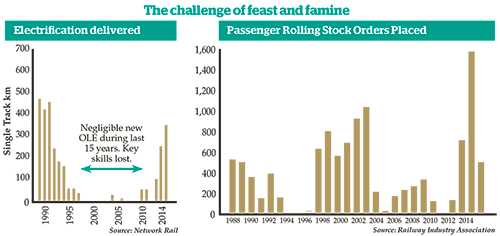
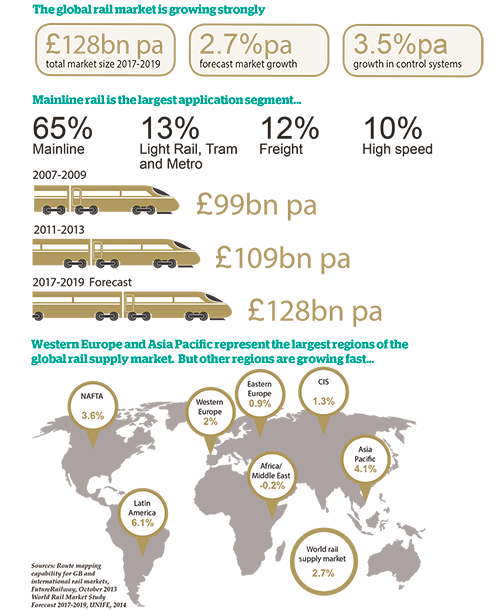
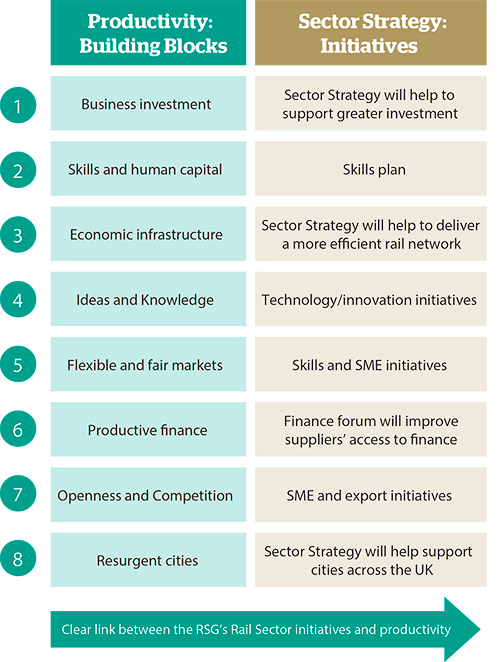
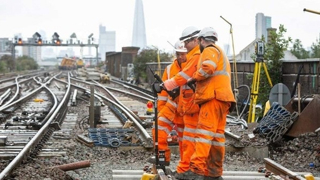
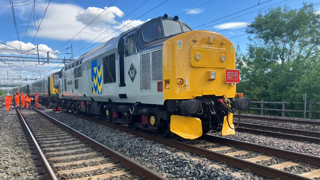


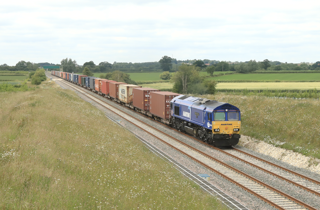










Login to comment
Comments
No comments have been made yet.